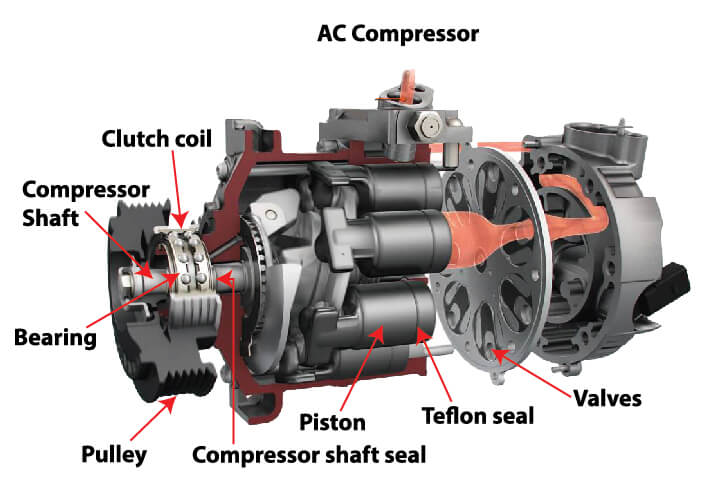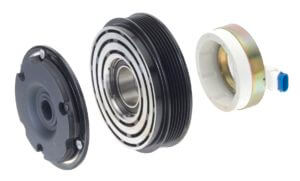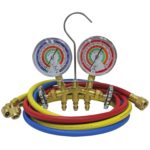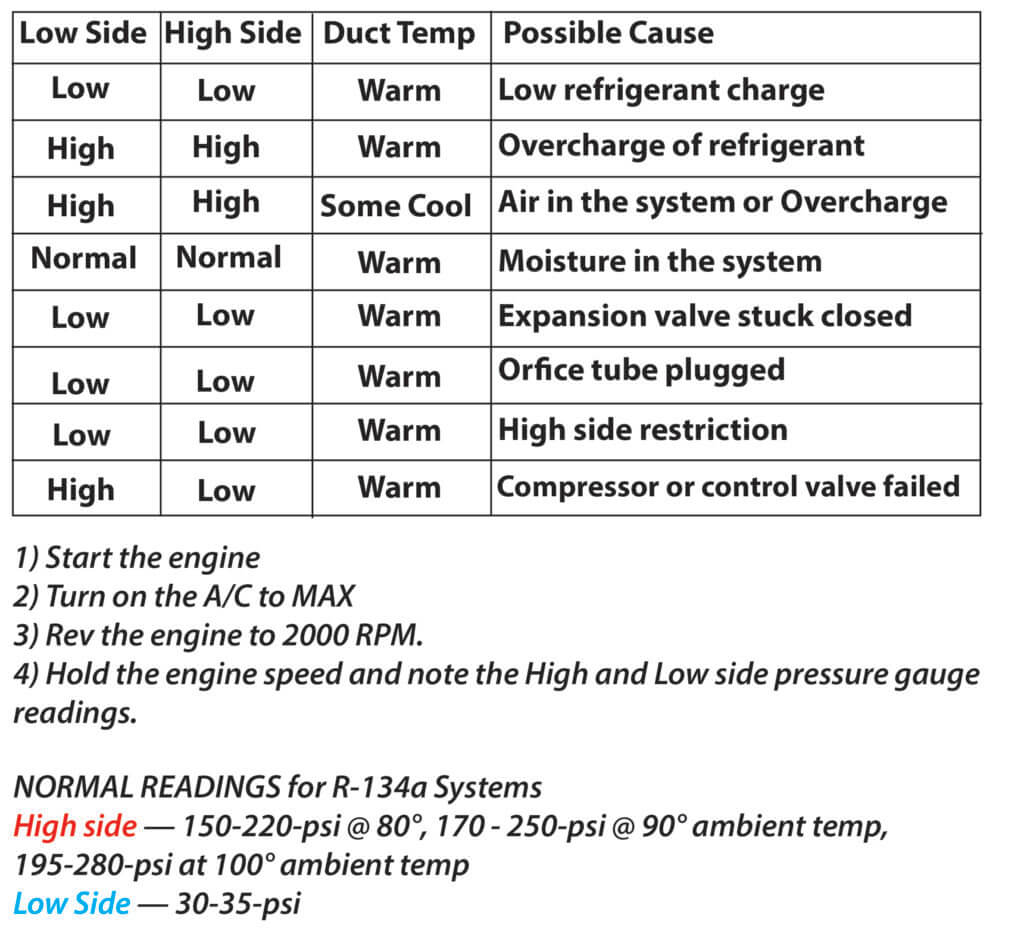Car AC blows warm air — How to find the cause
Car AC blows warm air— How to diagnose and fix
Many other things can cause an AC problem. A refrigerant leak is the most common cause, but even a fully charged AC system can blow warm air. If your car’s AC blows warm air, here are the most common causes in order of occurrence. They are:
1) The system is Low on refrigerant due to a leak
2) The compressor clutch not engaging because refrigerant pressure is too low, the clutch coil is shorted or open.
3) The flow control valve (used on clutch less compressors) isn’t working properly
4) A faulty evaporator temperature sensor is shutting down the compressor because it thinks the evaporator is freezing up.
5) The expansion device is clogged with debris or stop leak or is frozen due to moisture in the system.
6) Faulty ambient temperature sensor (on climate controlled systems)
7) Worn AC compressor
8) Inoperative radiator/condenser fan
9) Clogged condenser
There are certain steps you should take to diagnose why your car AC blows warm air. Here they are:
Step 1: Determine if you have a clutch or clutch-less style AC compressor
A clutch style AC compressor engages and disengages
Older vehicles have a clutch style AC compressor that engages and disengages the AC compressor shaft based on the needs of the AC system. The ON/OFF cycle can be controlled by the high/low pressure switches or an evaporator temperature sensor.

A clutch-less style AC compressor spins all the time
A clutch-less AC compressor spins the compressor shaft all the time. That may seem like a waste of energy, but think of it more like leaving your transmission in neutral. Because unless the compressor control valve is sensing a need for refrigerant, the compressor shaft is just idling and not actually pumping.
Watch the angle of the “swash plate when it’s pumping and when it’s idling. The control valve uses refrigerant pressure to change the angle of the swash plate based on the cooling needs in the cabin. If your vehicle has a clutch-less style AC compressor, scroll down to Step 3.
Step 2: Check for AC compressor clutch engagement on a clutch style compressor

AC compressor clutch connector
Lack of compressor clutch engagement can be caused by low system charge, excessively high pressure, a blown fuse, bad compressor clutch relay, clutch connector or grounding issues, an incorrect clutch air gap or a failed compressor clutch coil.
So start your diagnosis by turning the AC to MAX. Start the engine and pop the hood. Check to see if the center AC compressor clutch disc is spinning. If not, read this post to diagnose a compressor clutch not engaging condition.
If the AC compressor clutch engages and immediately disengages, you may have a clogged orifice tube or expansion valve. To learn more about orifice tube and expansion valve systems, see this post.
If the AC compressor clutch is spinning but your car AC blows warm air, follow these steps
Determine which type of system the carmaker installed in your vehicle. Orifice tube and expansion valve systems operate differently and must be tested differently. Find the type of system in your vehicle in this chart
Learn how an orifice tube system works BEFORE you start working on it
An orifice tube system is pretty simple. The orifice tube is simply a refrigerant metering device that allows only a certain amount of refrigerant into the evaporator coil. Orifice tubes incorporate a filter to prevent crud from clogging the orifice. When the filter becomes plugged, it can’t allow enough refrigerant to enter the evaporator. If you don’t understand how an orifice tube system works, you can’t diagnose and fix it.
See this post to learn how an orifice tube system works
See this post to learn how to diagnose an orifice tube system
Learn how an expansion valve system works BEFORE you start working on it
An expansion valve system is a bit more complicated and slightly harder to diagnose. The expansion valve can be a “block” style” or a valve with a capillary tube. It’s job is to meter liquid refrigerant into the evaporator based on the outlet temperature at the evaporator or the temperature of the evaporator coil using a capillary tube. Expansion valves can fail due to clogging, a kinked capillary tube (especially if you’ve had work done under the dash or hood), or failure of the diaphragm.
See this post to learn how expansion valve systems work
See this post to learn how to test an expansion valve system
Click here for more information on how to fix your car’s AC
Most common reasons why car AC won’t cool
Step 3: Use a manifold gauge set to check high and low refrigerant pressures.
Some DIY forums tell you to use a small screwdriver to depress the valve in the pressure port. They say if you hear a hissing sound, that means there’s refrigerant in the system. That’s true as far as it goes, but it’s NOT a measure of how much refrigerant is in the system.

Manifold gauge set with hoses
SO it’s an invalid test.
You can’t diagnose your car’s AC system without gauges. So get a
manifold gauge set and refer to this post for what the pressures mean.
Refer to this chart for a quick diagnosis

If the readings are a problem, conduct a superheat load test
Click here to learn more about SUPERHEAT and why it’s important in diagnosing your AC system
Click here for more information on how to conduct a superhead load test on an expansion valve system
Click here for more information on the symptoms of a bad expansion valve
Click here for more information on how to conduct a heat load test on an ORIFICE TUBE system
©, 2018 Rick Muscoplat
Posted on by Rick Muscoplat
